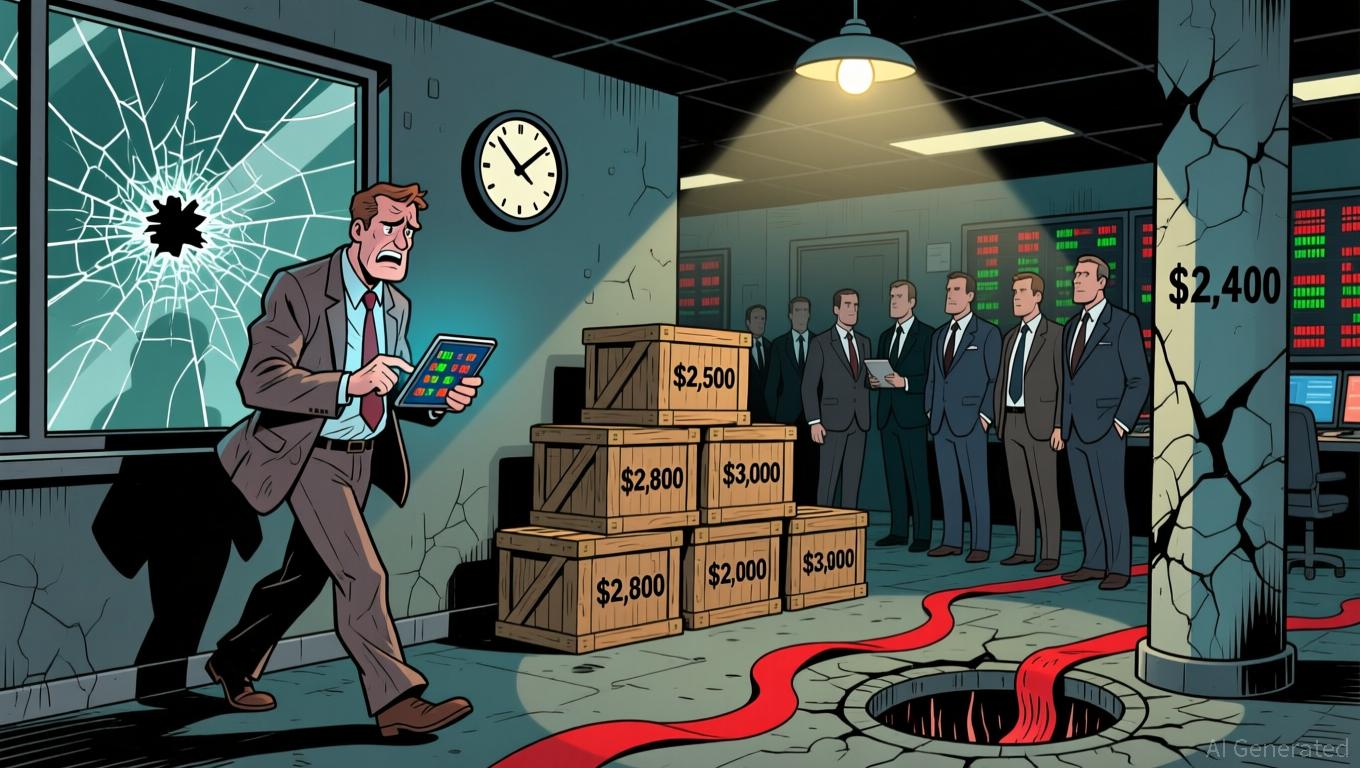The Growing Investment Potential in Education: Addressing School Counselor Deficits and Policy-Led Revitalization
- U.S. schools face severe counselor shortages, with 60% of districts unable to meet student mental health needs despite rising demand. - Federal grants ($280M in 2025) and state initiatives like New York’s SBHCs aim to expand access through training, staffing, and regionalized resource-sharing models. - The 2025 Mental Health Excellence Act targets workforce gaps by subsidizing graduate training for counselors, aligning with ASCA’s 250:1 student-to-counselor ratio goals. - Investors see long-term opportun
The Crisis in Counselor Availability
The shortage of counselors is severe. Data from KFF shows that in the 2024–2025 school year, just 18% of students accessed mental health support at school, while
Policy-Driven Infrastructure Reforms
New federal and state measures are starting to tackle these issues.
On the state level, initiatives like New York’s school-based health centers (SBHCs) showcase how infrastructure can be leveraged for better outcomes. SBHCs deliver a range of health and behavioral services, especially in rural communities with limited resources. Still,
Federal Funding and Legislative Mandates
The 2025 School-Based Mental Health (SBMH) Services Grant Program highlights the federal government’s dedication to expanding mental health access. These competitive grants are directed at states and districts facing the most severe shortages. For instance, West Virginia’s IMPACT Initiative received $3.03 million-
On the legislative front, the Mental Health Excellence in Schools Act, reintroduced in 2025, seeks to resolve the underlying issue: a shortage of trained mental health professionals.
Long-Term Investment Implications
For investors, the alignment of policy and infrastructure spending marks a fundamental change in the education industry. The need for mental health services is expected to rise as student challenges become more complex.

Additionally, the move toward regional and cooperative strategies points to potential in platforms that support resource sharing. Digital solutions for universal mental health screenings or telehealth services linking rural schools with specialists could see growth thanks to supportive policies. However, the vulnerability of rural infrastructure also presents risks—such as unstable funding—that require thorough evaluation.
Conclusion
The shortage of school counselors has evolved into a widespread challenge with clear policy-driven responses. Federal grants, new laws, and creative infrastructure approaches are coming together to build a more robust educational system. For investors, this is a rare chance to benefit from sustained growth in educational and mental health services, supported by bipartisan backing and a growing understanding that mental health is essential for academic achievement.
Disclaimer: The content of this article solely reflects the author's opinion and does not represent the platform in any capacity. This article is not intended to serve as a reference for making investment decisions.
You may also like
Ethereum Updates: Ethereum Drops to $2,800, Prompting Surge in Demand for ZKP's Hardware-Based Presale
- Ethereum's price fell below $2,800, triggering $6.5M liquidations and testing critical support levels amid declining on-chain demand metrics. - Institutional players like BitMine accumulated 3.62M ETH (~$10.4B) despite the selloff, signaling long-term bullish conviction. - ZKP's hardware-driven presale gained traction with $17M in ready-to-ship Proof Pods and Miami Dolphins partnership for privacy-focused sports analytics. - Mutuum Finance's $19M DeFi presale and ZKP's auction model with $50K wallet caps

Vitalik Buterin Supports ZKsync: What This Means for Layer 2 Scaling
- Vitalik Buterin endorsed ZKsync in late 2025, highlighting its "underrated and valuable" work alongside the Atlas upgrade achieving 15,000 TPS and $0.0001 fees. - ZKsync's zero-knowledge rollups and EVM compatibility enabled institutional adoption by Deutsche Bank , Sony , and Goldman Sachs for cross-chain and enterprise use cases. - The Fusaka upgrade aims to double throughput to 30,000 TPS by December 2025, positioning ZKsync to compete with Polygon zkEVM and StarkNet in Ethereum's Layer 2 landscape. -

The ZK Atlas Enhancement: Revolutionizing Blockchain Scalability?
- ZKsync's 2025 Atlas Upgrade achieves 15,000–43,000 TPS with sub-1-second finality, addressing Ethereum L2 scalability bottlenecks via Airbender proofs and modular OS. - DeFi protocols like Aave and Lido leverage ZKsync's $0.0001/tx costs to unify liquidity, while Deutsche Bank and Sony adopt its trustless cross-chain infrastructure for compliance and transparency. - ZK token surged 150% post-upgrade, with TVL hitting $3.3B and analysts projecting 60.7% CAGR for ZK Layer-2 solutions by 2031 amid instituti

XRP News Update: XRP ETFs Spark Optimism—Is $1,115 Within Reach?
- XRP's price surge to $2.20 is driven by ETF launches, with $422M inflows from Franklin Templeton and Grayscale. - Technical indicators suggest a potential $2.50+ rally if support at $1.84 holds, with long-term forecasts reaching $26.50 by 2030. - Institutional adoption of Ripple's ODL and Ripple USD's $1B+ market cap highlight growing utility beyond remittances. - Regulatory clarity post-SEC ruling and macroeconomic factors remain critical for XRP's $1,115 potential in ultra-bullish scenarios.
